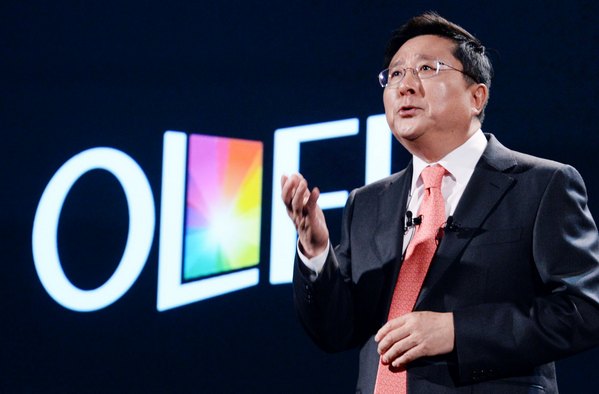Several Chinese TV manufacturers and electronic suppliers have joined South Korea’s LG Display and LG Electronics to form an OLED display technology alliance on Sept. 16, 2015, reported Want China Times recently.
Yet, several important TV makers were missing from the alliance such as Samsung and Chinese TV manufacturers TCL and Hisense. The alliance promoted by the China Video Industry Association reflects the division in the TV sector over whether OLED will be the future, according to Shanghai’s China Business News.
 |
|
Dr. Sang Beom Han, CEO and President of LG Display during the opening keynote speech at IFA 2015 in Berlin this year. The South Korean company has been a strong promoter of OLED TV technology. (Photo courtesy of LG Display) |
Drawbacks of OLED TVs include a much shorter lifespan, residual images, lower efficiency and are more costly than LCD TVs to manufacture, said Houjian Zhou, chairman of Hisense Technology recently.
Hisense has also pointed out mass produced OLED TVs are still lagging behind in TV definition of only 2K, while LCD TVs have reached the 4K UHD phase.
Even TLC has shown lack of interest in joining the OLED bandwagon, with plans of developing a thinner LED backlit product that matches in OLED TV in thinness, but is less costly to manufacture, said the company’s Vice President for multimedia Rulin Wang.
Samsung discontinued its OLED production in 2014. In response, head of OLED TV said the OLED TVs can operate normally, and the company will continue to improve the technology despite the issues by addressing these problems.
Ching W Tang, a Hong Kong professor and OLED expert, pointed out OLED TVs power consumption is about the same as LCDs, and that the issue of residual image can be solved with further research in the long term. The greatest obstacle that remains is the wider distribution of OLED TVs, said Tang, and finding a way to improve yield rates while overcoming defects and lowering costs.
OLED TVs are estimated to reach nearly 20 million units by 2021, the paper cited Display Search saying.
Whether LG Display can meet this OLED panel demand remains a question, the company plans to expand production to 2 million by 2017.
Even though OLED panels are more difficult to produce than LCDs, LG Display noted it only took two years to achieve yield rates over 80% in the production of 2K OLED panels.
According to LG Display the development of 4K OLEDs will be quicker, stating it took 10 years to achieve an 80% yield in the production of LCDs.
Another dilemma over the development of OLED is it could impact China’s LCD TV production.
Founding members of the OLED TV alliance include China’s two largest panel makers, BOE Technology Group and Shenzhen Star Optoelectronics Technology Company (CSOT). BOE has started production of AMOLEDs, and CSOT intends to start manufacturing OLED products, according to the paper.












